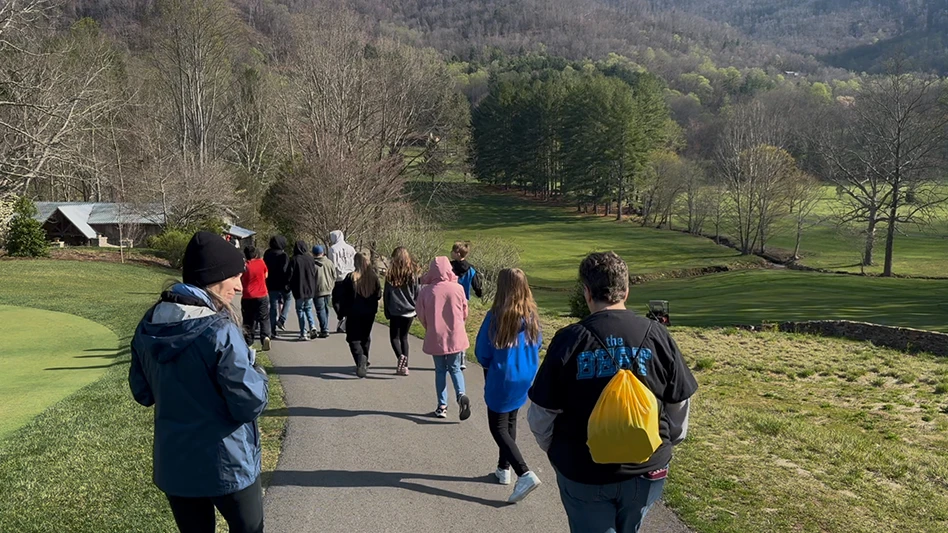Two major industry shows have come and gone, and in most parts of the country the golf season is upon us. The game’s associations have made their announcements and proclamations, including unveiling their latest ideas for improving and broadening the game. All of which got me thinking, and prompted the following thoughts, questions, and proclamations of my own.
Are we growing golf in a meaningful way? I don’t think so.
Among the ideas espoused by the game’s leaders were closing courses to reach a “more manageable” level (what will that do to the constituents of the PGA of America and GCSAA who are presently employed at those “extra” courses?); “driving golf forward” (the USGA’s multi-year campaign focused on four key impact areas to create new opportunities for golf to grow and endure); and targeting millennials as well as “sports socialites; interested in more than the competition.”
Excuse me while I scratch my head and ask, “Will any of these initiatives will move the needle?” Again, I don’t think so.
Are we that desperate that we feel we must include everyone walking the face of the earth to play our game? Just as with baseball, or most any other sport/leisure activity/hobby, you either like golf or you don’t. Trying to force-feed it to all audiences dilutes the game’s special allure, it’s magic. For those of us who get it, golf is enjoyable, challenging and especially addictive. But also, as with anything else, frantically and wildly trying to increase the number of devotees seems to me more likely to oversaturate and minimize the game rather than enrich it, and serve only to fatten the wallets of those who profit from it.
The USGA’s campaign will help fund cutting-edge innovation and industry-leading research designed to improve the golfer experience and help golf facilities reduce their reliance on critical resources such as water, nutrients, chemicals, and energy by 25 percent by 2025. That sounds good. But wait, money will also be spent on global forums to better connect the worldwide golf community and produce positive, collaborative change. Oh yes, that’s just what we need, more forums and collaborative change.
If there’s one thing the golf industry has never had a problem developing, it’s more talk.
I’ve keep hearing how Topgolf is a great idea and an industry bright spot, so I decided to try it out. For $35 an hour I got a bucket of balls (micro-chip embedded, no less!), a waiter to serve my beverage(s) of choice, and upbeat music to serenade my swing flaws. It was fun. Once.
But for this self-admitted traditionalist, it wasn’t golf. Which is fine. But will Topgolf — think of it as driving range meets bowling alley meets bar — drive people to golf courses? About half of the players around me seemed focused on hitting balls, while the other half were goofing around. The guys in the booth adjacent were trying very hard to hit the right target with the appropriate clubs, busting one another’s chops when shots fell short. It was good, old-fashioned camaraderie, and in some ways was the most golf-like element on display. So maybe there is hope that Topgolfers will become real golfers. I really hope so.
I recently had a long conversation with a colleague who strongly agrees with the PGA’s stand that the game would be better served by closing 1,500 to 2,000 courses. That’s a staggering number and I’m sensitive to putting people out of work. But there are other sides to the argument: People are already out of work because the existing courses aren’t generating enough business; closing weak courses would drive more business to better and more economically secure courses, leading them to bring on more employees; and the land currently used for weak courses could be more wisely and profitably used for other things that could employ and service even more people. It’s by no means a slam dunk, but it’s a given that there are too many courses.
Another initiative I’ve heard about is “maintenance down the middle,” literally worrying more about conditions down the middle of each hole than to the sides. Focusing on where the traffic goes may save money, but it shortchanges the role of the superintendent, most of whom take pride in their efforts to care for the entire course. You don’t have to be working at Augusta National to want to provide the most beautiful atmosphere possible and within budget.
Are we becoming a little obsessed with time? If you don’t have enough time to play 18, nine is just fine. And I agree there should be other options—maybe it’s three- and six-hole loops, even paying by the hole. But one of the great joys of golf is that unlike football, hockey and basketball, a “round” is not a measure of seconds ticking but shots hit and holes completed. The only time constraint I felt growing up was to play fast before darkness fell. And now that I can play when I want, if the course isn’t crowded I take my time, enjoying where I am and what I’m doing, disappearing into a cool place for as long as I can. Since it’s my dime, I’ll take my time — as long as I’m not holding any up.
Who needs 8,000-yard golf courses? Nobody I know, that’s for sure. Why tee it up from another county only to be embarrassed? Unless you’re on the PGA Tour, there’s absolutely no reason to play from the tips. Which leads to the whole “roll-back-the-ball” brouhaha. I’m sorry Mr. Nicklaus, but I’m not hearing many members at my club saying the course has gotten too short or too easy. Only about .01 percent of the golfers in this country have that worry, so why make the rest of us suffer? And as for those players who do hit it “too long?” Just like the best in any sport, they fascinate us, which is why we pay high ticket prices and spend hours in front of the TV to watch them.
Tiger is no longer the answer to golf’s problems, not that he ever was. He was great in his day and helped draw attention (some good, some not) to our game. I miss Tiger circa 2000. But you know what? We have to be careful not to put the fate and future of golf on the shoulders of any one player, and certainly not one whose had umpteen surgeries, just had his spine fused and is past his prime. Will he ever play the way he once did? I hope so. I’d love to see him make a mid-40s run at another major and hear the roars at Augusta once more. But will we? What do you think…
If you feel I can only be negative, join me in applauding the new World Handicap System (WHS), designed to provide golfers with a consistent measure of playing ability globally. The new system will offer flexibility in formats of play, allowing both competitive and recreational rounds to count for handicap purposes. And it will require only a minimal number of scores to obtain a new handicap, including, it is hoped, a combination of 18-hole and nine-hole rounds. I like it!
Random thoughts? I think not, and I hope you see the thread, which is my love, respect, and awe for this greatest of games. I’ll end with a line from a recent story in the New York Times that was trying to make fun of golf but only made those of us already addicted smile: “Golf’s biggest strength is also its greatest weakness: You disappear into a different world for five hours — a magical forest world where you drive your own buggy and send a tiny sphere into the sky.”
Can I hear an “Amen?”
Get curated news on YOUR industry.
Enter your email to receive our newsletters.
Explore the March 2018 Issue
Check out more from this issue and find your next story to read.
Latest from Golf Course Industry
- Ahead of the sustainability curve
- From the publisher’s pen: Watery dilemma
- The Aquatrols Company hires marketing manager
- Renovating Bredemus in West Texas
- Renovation starts at Okatie Creek GC at Sun City Hilton Head
- The Fittest Podcast in Turf: Episode 1
- New 6-hole course debuts in Oklahoma
- GCSAA announces Grassroots Ambassador Leadership Award recipients







